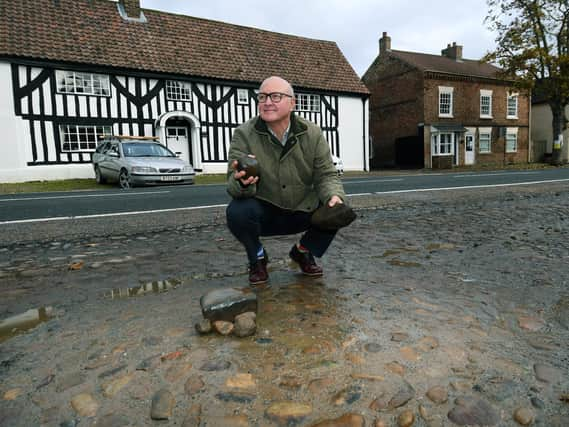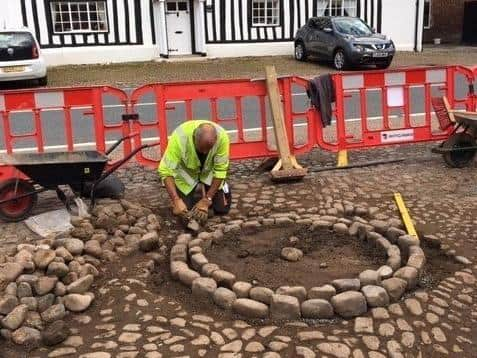How North Yorkshire villagers found a pre-16th century well while re-laying cobbles


Workers were re-laying damaged cobbles near to the war memorial in Helperby in the Hambleton district.
They had not bargained on digging down to uncover a centuries-old well.
Advertisement
Hide AdAdvertisement
Hide AdMembers of the Brafferton and Helperby Parish Council had organised the re-laying but had always been stumped by a persistent puddle in the spot where they were working.


As the volunteers started digging deeper, more water appeared.
Eventually they came to a limestone block.
After speaking with the county archaeologist department and a few more investigations, members of the parish council were able to establish that it is a pre-16th century, possibly medieval, well.
Nigel Denison, chairman of Brafferton and Helperby Parish Council, said: “It could go back in terms of medieval ages.
“Nobody had any idea it was there.”
Advertisement
Hide AdAdvertisement
Hide AdAlthough long-forgotten, such items would not have been uncommon in Helperby in days gone by.
Mr Denison added: “We’ve got a very long-standing builder in the village.
“He said there was something like 17 wells.”
Mr Denison said that water mains only came to the area relatively recently, which may explain the need for that number of wells.
He lives in the former village doctor’s house and said that he was “mixing his medicine in the village pump in 1939”.
Advertisement
Hide AdAdvertisement
Hide AdMr Denison said that the parish council would be unable to clean up the well and present it permanently to locals because it is located right at the spot where vehicles need to access the village hall.
“It’s not suitable making a feature out of it,” he said, although there were brief talks about it.
Villagers have been interested, however, stopping by the spot to have a glimpse of a piece of local history.
Workers are relaying the cobbles with the help of a £4,000 grant from Hambleton District Council’s Making a Difference Fund.
Advertisement
Hide AdAdvertisement
Hide AdAccording to the parish council, the first settlers in what is now Brafferton and Helperby - located some 15 miles north-west of York - were probably Roman (70AD – 400AD).
The Roman road from Malton to Aldborough passed through the area of the village to cross the River Swale at a ford.
It is thought this explains the derivation of Brafferton - ‘Broad-ford-tun’, or a town at the broad ford. Fords were always good places for an entrepreneur to set up trade.
There is a legend that the name of sister village Helperby comes from the River Swale providing St Paulinus with ‘help hard by’ or ‘Helper-by’ when he needed water for the baptisms.
Advertisement
Hide AdAdvertisement
Hide AdThe medieval period – also called the Middle Ages – was a time in European history between the fall of the Roman Empire in the west (fifth century) to the Renaissance period in around the 15th century.